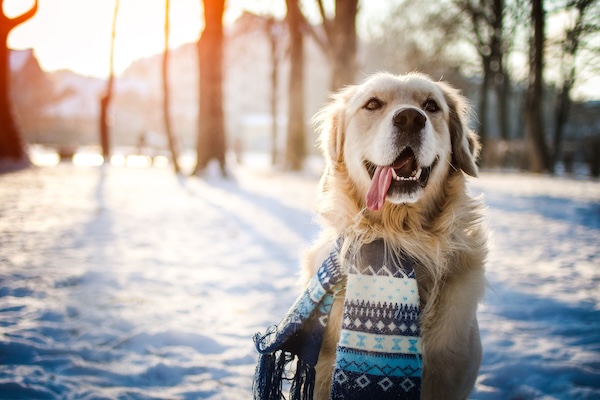
Winter is a beautiful season, with its snowy landscapes and cozy vibes, but it can also present challenges for our furry friends. As the temperatures drop in the Winter in areas like St. Charles, Elgin, Bartlett and Carol Stream, it’s important for pet owners to ensure that their dogs are safe, warm, and comfortable. Whether you’re searching for doggy daycare near me or just looking for winter safety tips, here’s a comprehensive guide to keeping your dog safe during the colder months.
1. Dress Your Dog Appropriately
Dogs, just like humans, can feel the chill. While breeds like Huskies and Malamutes are naturally equipped to handle cold weather, smaller or short-haired breeds need extra protection. Consider investing in a high-quality dog coat or sweater, ensuring it covers your dog’s back and belly for maximum warmth. This is especially important if you’re planning to take your dog to dog daycare near St. Charles or Elgin, IL, where outdoor playtime might be part of the daily routine.
2. Protect Their Paws
Paw pads are sensitive, and winter can be tough on them. Snow, ice, and chemicals like road salt can cause irritation and even burns. To protect your dog’s paws, try using booties or apply paw wax. If your dog isn’t a fan of booties, paw wax is a great alternative. After walks, rinse your dog’s paws with warm water and dry them thoroughly to prevent irritation.
3. Be Mindful of Walks
On colder days, shorten your walks to avoid exposing your dog to freezing temperatures for too long. Watch for signs of discomfort like shivering or lifting their paws. When walking in icy conditions, be extra cautious as sidewalks can become slippery for both you and your dog. Always look out for safer paths, like grassy areas, when navigating ice.
4. Provide a Warm Sleeping Area
Ensure your dog has a warm, cozy spot indoors to sleep. Keep their bed away from cold tiles or drafts. If your dog is staying at dog daycare near St. Charles, inquire about their indoor accommodations to ensure your dog stays comfortable throughout their visit.
5. Maintain a Nutritious Diet
Dogs may burn more calories in winter trying to stay warm, so they may need slightly larger portions. Consult with your vet before adjusting your food intake. Also, ensure your dog has access to fresh, unfrozen water at all times.
6. Beware of Antifreeze
Antifreeze can be deadly to dogs, and its sweet taste often attracts them. Be cautious of spills in driveways or garages. If you suspect your dog has ingested antifreeze, contact your vet immediately.
7. Monitor Indoor Hazards
Space heaters and fireplaces can be a danger if your dog gets too close. If using a space heater, ensure it’s pet-safe and can’t be knocked over. Install a protective screen on fireplaces to keep your dog at a safe distance.
8. Regular Grooming
Maintaining a clean and healthy coat is essential during winter. Matted fur doesn’t provide proper insulation, and ice can build up between long hairs. Trim the hair between your dog’s toes to avoid ice balls, but never shave your dog’s coat down to the skin, as it provides natural protection against the cold.
9. Avoid Cars as Shelter
Never leave your dog in a cold car. Cars act as refrigerators during the winter, trapping cold air and putting your dog at risk of hypothermia.
10. Conduct Regular Health Checks
Cold weather can worsen conditions like arthritis. Keep an eye on your dog’s health and behavior. If you notice any changes in their mobility or overall well-being, consult your vet for advice.
11. Be Visible
With shorter days, many of your walks may take place in the dark. Ensure both you and your dog are visible to traffic and others by using reflective collars, leashes, and vests.
12. Bring Your Pets Inside During Cold Weather
Always keep your pets indoors during extreme cold, as they can freeze, get lost, or even suffer from hypothermia. If they absolutely must stay outside, ensure they have a dry, draft-free shelter to keep them warm and safe.
Winter provides a great opportunity to bond with your dog, whether it’s through winter activities or simply keeping them cozy indoors. By following these safety guidelines, you can help ensure your dog stays happy and healthy throughout the colder months. If you’re looking for doggy daycare near me to ensure your dog has a safe place to stay while you’re out, be sure to choose a facility that prioritizes your dog’s well-being year-round.